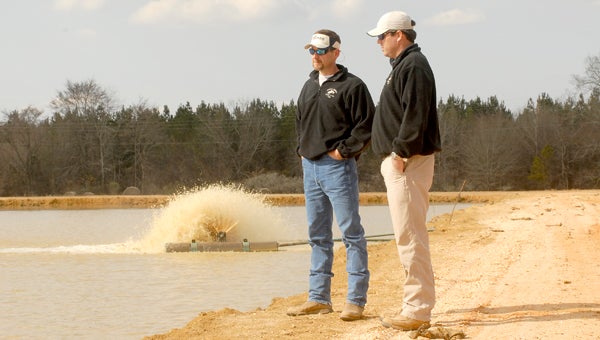Prices are good news to farmers
Published 11:57 pm Saturday, June 25, 2011

Will Pearce, right, said the recent increase in catfish prices is good news to catfish farmers. -- Dennis Palmer / File
Will Pearce, with Pearce Catfish Farms, can finally make some of those long-awaited improvements around his farm.
Finally, the cost of his product, domestic catfish, has risen due to demand and drop in production.
Today a farmer who gets $1.07 per pound of fish was only getting 65 cents just one year ago.
“With fish at the price they are, it’s good for the farmer,” Pearce said. “Farmers who have had to hold back on buying some of those things that would improve his farm … Now they can do that regular upkeep and just keep the farm as it should be.”
While supply and demand is a giant portion of the raise in price for the fish, the continuing rise in cost of feed also contributes, according to Alabama Department of Agriculture and Industries Commissioner John McMillan. “The cost for fuel and feed are up substantially, which hurts the catfish farmers,” McMillan said. “However, those farmers still in the catfish business are benefiting from higher prices due to a drop in the production.”
Pearce agreed, citing the rise of feeding costs as a big reason for the higher price.
“The price (of feed) has risen 35 percent from what it was this time last year,” Pearce said. “That’s the number one expense catfish farmers have. They are trying to help with raising the price, to encourage farmers to keep at it. It looks good when price goes up, but there’s always a reason behind it.”
According to the Alabama Department of Agriculture and Industries, the production of the state’s farmers is at or near the production levels of prior years, but other states in the Southeast have seen a reduction in production along with pond acreage.
Even the Pearce farms have seen a decrease in production.
“It’s the first time in years we’ve had to stop selling fish for a month to catch up,” Pearce said. “We had to wait for them to start growing a bit before we sent them off.”
Alabama remains only behind Mississippi in the production of catfish in the United States.
Together, the two states account for more than 80 percent of America’s catfish production.





